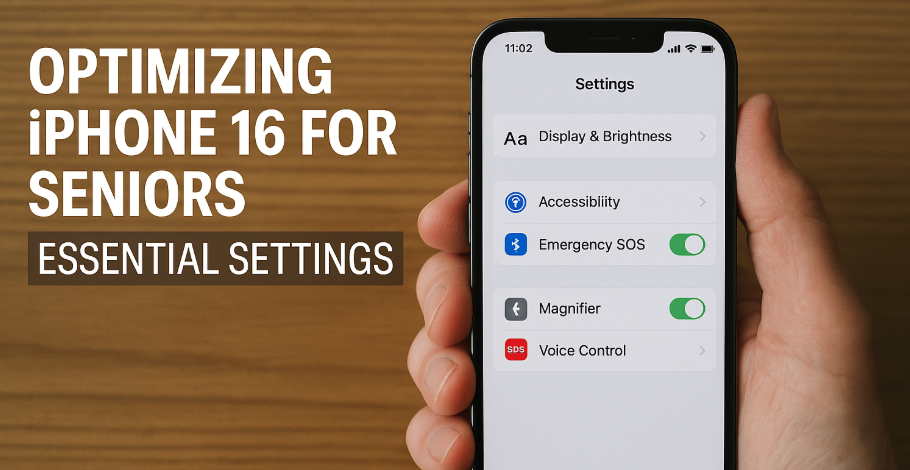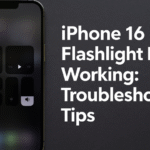Whether you’re new to the iPhone or have been using it for years, adjusting settings for comfort and accessibility is key especially for older adults. With iOS 17, Apple offers a wide array of features that enhance usability for seniors, including larger text, voice control, magnification tools, and emergency assistance.
In this guide, we’ll walk through essential settings that make iPhone 16 easier and safer for senior users to navigate. Whether you’re setting it up for yourself or a loved one, these adjustments can significantly improve day-to-day use.

1. Enable Larger Text and Bold Font
One of the first changes to consider is increasing text size and contrast.
How to Adjust Text Size:
-
Go to Settings
-
Tap on Display & Brightness
-
Tap on Text Size
-
Use the slider to choose a comfortable reading size
-
Enable Bold Text for greater visibility
With these settings, reading emails, text messages, and web articles becomes much easier.
2. Turn on the Magnifier Tool
The built-in Magnifier transforms the iPhone’s camera into a digital magnifying glass.
Steps to Enable:
-
Go to Settings
-
Tap Accessibility
-
Select Magnifier
-
Toggle the switch to ON
-
Triple-click the side button to activate when needed
This feature helps with reading small labels, restaurant menus, or medication packaging—making it especially valuable in everyday situations.
3. Use Siri Voice Control
For users who have trouble typing or tapping accurately, Siri can control most phone functions with just your voice.
How to Enable Siri Voice Control:
-
Go to Settings
-
Tap Accessibility
-
Tap Voice Control
-
Toggle ON Voice Control
Now you can say commands like “Open Messages,” “Scroll down,” or “Call John” without lifting a finger. This is especially helpful for users with motor limitations or vision impairments.
4. Set Up Emergency SOS Features
The Emergency SOS feature is a must-have for seniors. It allows quick access to emergency services and contacts.
How to Enable:
-
Go to Settings
-
Tap Emergency SOS
-
Enable Call with Side Button and Auto Call
-
Add emergency contacts
In an emergency, press the side button five times or hold the side + volume button to trigger a call to local emergency services. This can be a literal lifesaver.
5. Customize Sound Settings for Better Hearing
If you’re experiencing muffled or low-volume audio, adjusting the audio output can make a big difference.
Explore these solutions:
-
Use Settings → Accessibility → Audio/Visual → Headphone Accommodations
These options help enhance clarity for calls, notifications, and video playback—ideal for seniors with mild hearing loss.
6. Improve iMessage and Voicemail Accessibility
Missed messages or voicemails can cause communication gaps. Tuning these features can help:
Ensure both services are working properly so that important updates from loved ones aren’t missed.
7. Declutter the Home and Lock Screen
Simplify the interface by disabling unnecessary features:
Disable Lock Screen App Suggestions:
-
Go to Settings → Siri & Search
-
Toggle OFF Suggestions on Lock Screen
Explore more:
How to disable app suggestions on iPhone 16 lock screen
This keeps the screen focused and prevents accidental taps or confusion from unwanted suggestions.
Bonus: Useful Apps for Daily Tasks
Once the phone is fully optimized, consider installing apps that enhance productivity and independence. Check out:
-
Calendar reminders
-
Medication trackers
-
Health apps like Apple Health or Medisafe
Final Thoughts: Empowering Senior iPhone Users
Technology doesn’t have to be overwhelming. With just a few thoughtful settings, the iPhone 16 can become an intuitive, reliable tool for seniors enabling easier communication, safety, and independence.
By activating features like larger text, voice control, and emergency SOS, you create a supportive digital environment that matches any senior’s needs.







